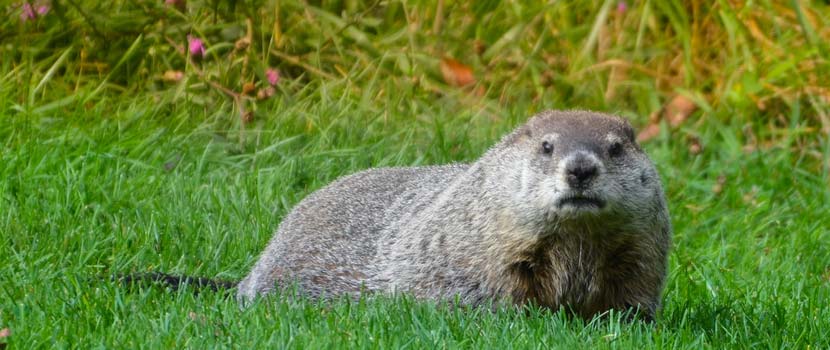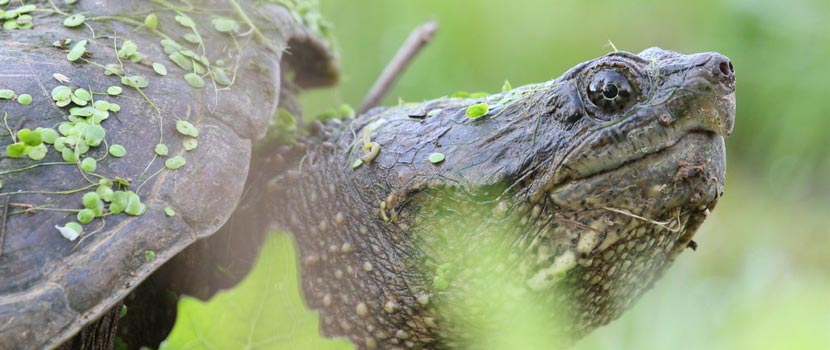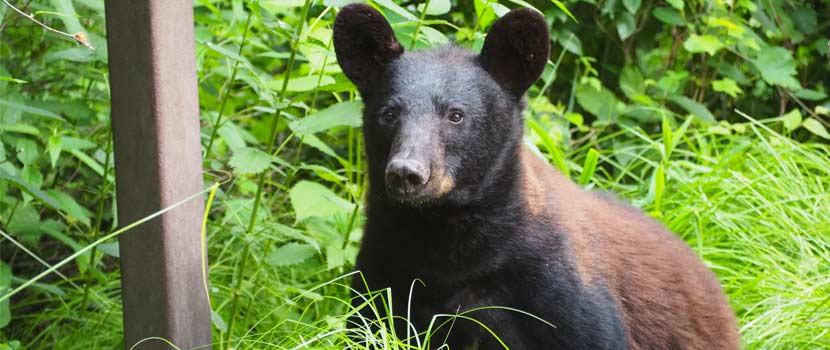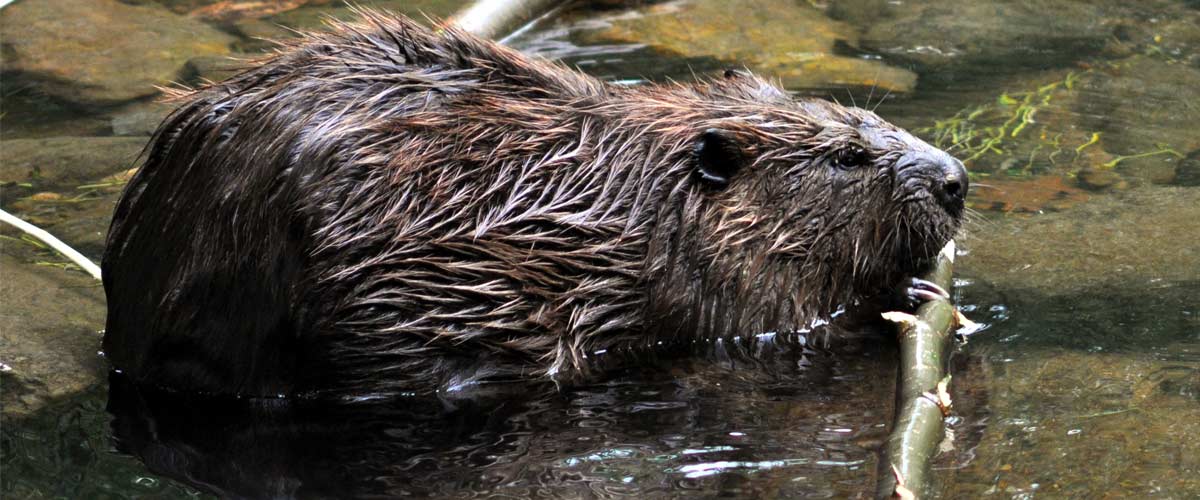
Chewed trees, dams in the water, lodges in lakes made of branches and mud. These are exciting clues to discover that all point to one creature: beavers!
If you live in the Twin Cities metro area and visit Three Rivers parks, you can easily find signs of beaver activity. Although beavers are plentiful today, they did not exist in Three Rivers parks 40 to 50 years ago – and in the Twin Cities area, they were probably only rarely found along the Minnesota River.
In the early 1800s, beaver pelts were used for making hats, and their populations were overharvested for their prized fur. Today, beavers are found throughout our parks and sometimes even in numbers that are too high.
Giant Rodents
Beavers are the largest rodents in North America and the second-largest in the world. That’s right, I said rodent! Taxonomically, beavers are in the order Rodentia and suborder Castorimorpha. Other rodents found in this suborder include gophers, kangaroo rats and kangaroo mice.
Being a rodent is why beavers can efficiently chew and knock down some impressively large trees. Their skulls are large compared to other bones in their bodies, allowing for large muscles to attach to it. Their muscular jaws coupled with continually growing front teeth, a trait of rodents, allow them to knock down a five-inch tree in only a few minutes.
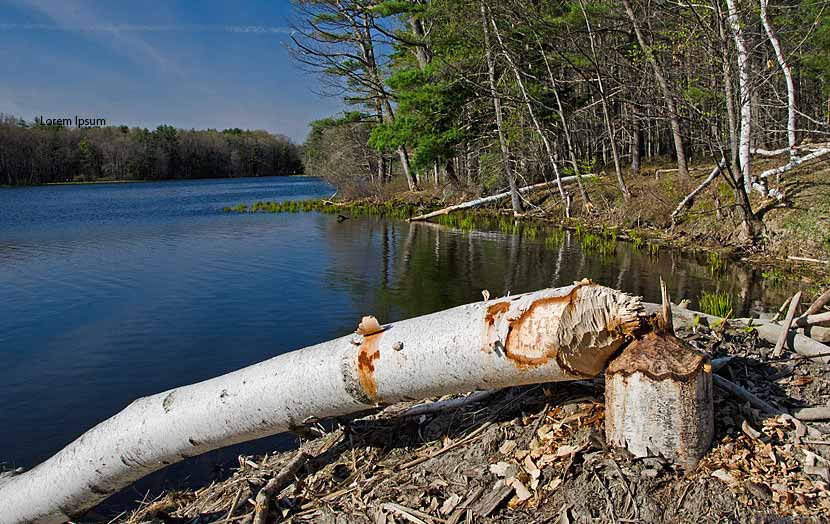
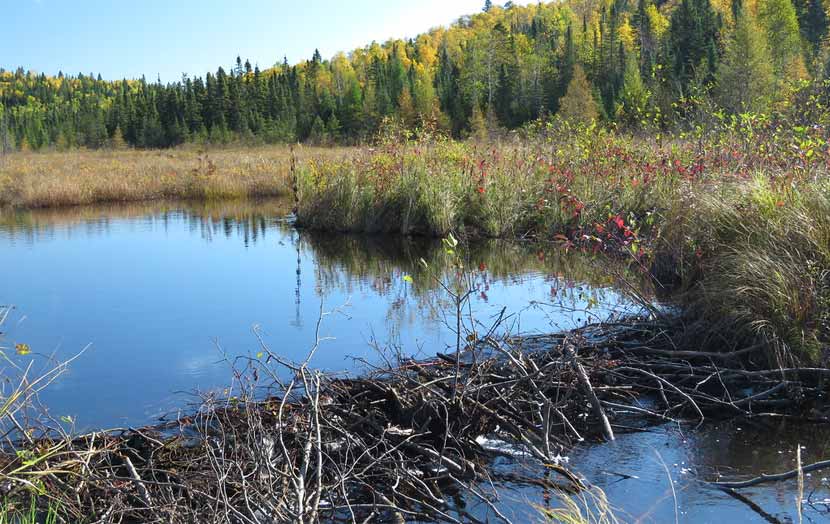
Biologists often refer to beavers as nature’s engineers or a keystone species because of their ability to totally transform the ecosystem around them. This is great if you are a mink, muskrat, turtle, egret, heron, kingfisher, frog or other wetland-dwelling creature. However, this is not good if you are a human and their transformation of the landscape floods the road to your house or your septic system, or fells your favorite shade tree that took over 100 years to grow.
Another common rodent trait in beavers is that once sexually mature, they can increase their population by five times in two years. This quick increase can cause problems. Beavers are territorial and have two glands near their cloaca that are called castor glands. These are used to mark their territory especially in the spring when the 2-year-old beavers are kicked out of the family unit to find a place to live on their own.
Surviving and Thriving in the Water
Beavers live most of their life in and under the water, and they have many adaptations that allow them to survive in this environment. Beavers can close valves on their ears and nose when diving underwater. They also have an additional see-through eyelid called a nictitating membrane that can be closed while underwater and still allow them to see – similar to wearing goggles. This is a common adaptation in birds but rarely found in mammals.
Also unusual to mammals, beavers’ epiglottis – the small flap that closes when you swallow to prevent food or water from getting into the lungs – are located just behind their nostrils. This allows them to breathe through their nostrils, which are located near the top of their skull, while swimming. Beavers can also press their tongue against the back of their throat so they can open their mouth and carry sticks or chew and not choke while underwater.
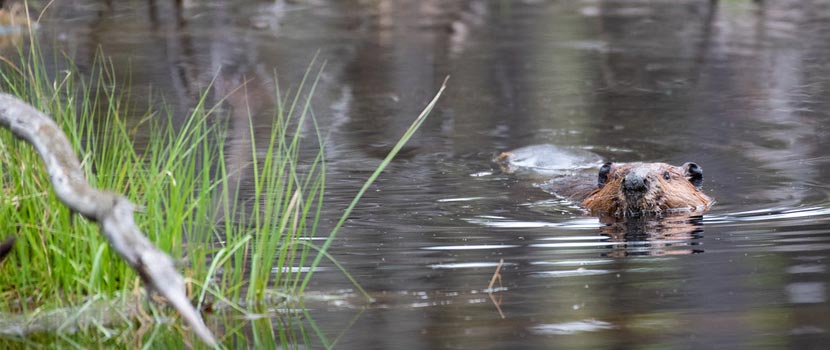
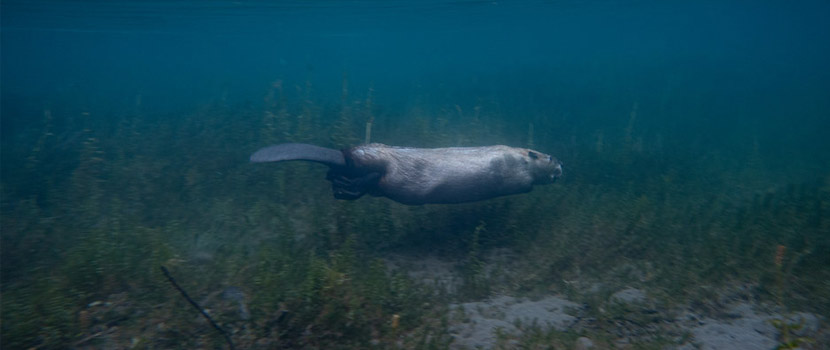
Beavers’ hind and front feet are also well adapted for living in the water. Their hind feet are webbed for swimming. They also have a split in the toenail of their second toe that allows them to carry oil from inverted oil sacs near their cloaca to groom their fur for waterproofing capabilities. The front feet are also used for grooming, especially around the face, but they have specifically evolved for digging.
Their unique tail also has many uses including:
- as a rudder while swimming
- for bracing itself when felling a tree
- for slapping the water to warn others of danger
- for sitting on while in the water.
The tail also has a special adaptation to control body temperature. Beavers’ tails have an intricate system of blood vessels that allow them to cool their bodies when it is hot and stay warm if it is cold. Keeping warm can be especially important when swimming under the ice. Beavers can hold their breath for 20 minutes, but even with a thick fur coat, being under the ice for that long would cause them to lose too much heat out of their tail.
How Do Beavers Survive Winter?
Beavers live underwater all winter, which requires proper preparation. Beavers are entirely herbivorous and eat primarily woody material in the winter. To have enough food to last all season, they create a food cache by piling sticks and branches outside of their house. The food cache consists of cuttings of willow, cottonwood, aspen, alder and other deciduous trees in the winter.
The timing to pile up this overwinter food source must be correct. Too early and the wood could rot before the water freezes. Too late and they risk not being able to store enough food to last the winter before a layer of ice forms on top and they can no longer easily access dry land for more.
Beavers feed on the inner bark of the branches that they piled in front of their shelter. Over time, the branches begin to look like white sticks. Beavers need deep enough water to survive the winter, otherwise their cache will freeze solid.
If the water is not deep enough, they need to build a dam to hold back water over the summer months. The dams can sometimes be hundreds of yards long and hold back several feet of water. Their home can only be constructed after they have deep enough water to build it.
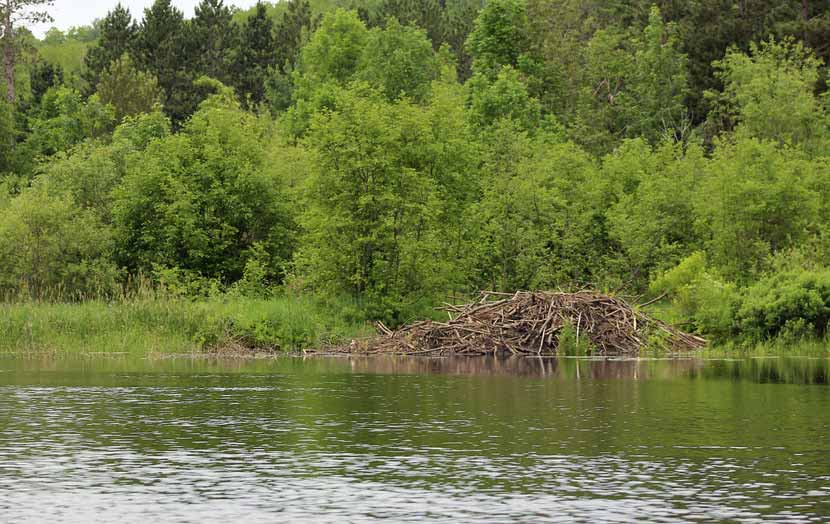
Beavers have two different types of dwelling places. A beaver lodge, which many of you have seen, is a stick house pieced together with mud. It has two underwater entrances. Other times beavers dig into the bank. This is usually done in rivers and streams to create what is called a bank den. In both cases the underwater entrance leads to a spot used for drying off and a step up higher in the house is where the bed is used primarily for sleeping and staying warm in the winter.
Managing Beavers in Minnesota and Three Rivers
In Minnesota, roughly 20 to 30 thousand beavers are harvested each season under state trapping and game laws. This helps keep populations at manageable levels. Beaver skins can be used to make warm gloves, hats, slippers and sometimes even a coat. Although their fur is a renewable resource, the demand for fur is not high and therefore prices are low.
Many beavers reside within Three Rivers parks and they do it successfully without any issues. They are such an important part of the parks’ wildlife. However, there are some that decide to set up their home in the wrong place and are labeled a nuisance. Currently, there are not enough trappers to regulate a balanced population.
Beavers need continual management because we have removed the predators – primarily wolves – that would have preyed upon this species prior to European settlement. Without a balanced harvest, the populations become so large that our staff or other government trappers must remove them.
Where to See A Beaver
If you want to see a beaver, try waiting patiently on a dock or on a trail that runs alongside a lake or larger stream during the early mornings or late evening hours. I would recommend Lake Rebecca or the Crow River at Lake Rebecca Park Reserve, Prairie Lake at Crow-Hassan Park Reserve, Half Moon Lake at Baker Park Reserve, French Regional Park, the Turtle Basking Pond at Hyland Lake Park Reserve, Murphy Lake at Murphy-Hanrehan Park Reserve, or Cleary Lake at Cleary Lake Regional Park.
Archive image: "North American beaver (Castor canadensis)" by GlacierNPS is marked with CC PDM 1.0
Banner image: "File:20100929 1013.jpg" by dw_ross is licensed under CC BY 2.0
About the Author
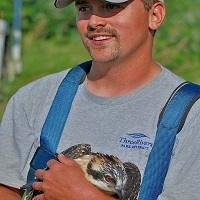
Steven Hogg is the Wildlife Supervisor at Three Rivers Park District and has been working for the Park District for 13 years. After graduating from the University of Alberta with a degree in Environmental and Conservation Biology, he moved to Minnesota to marry his beautiful Minnesota bride. Steven has always had a passion and dedication for wildlife, even when he was young. This passion is what lead him into a career where he strives for the proper orchestration of research, management, and politics to ensure natural resources and wildlife are given a voice. In his spare time, which there is little of with his three kids, Steven likes to farm, hunt, and fish.
Related Blog Posts
All About Groundhogs and a Brief History of Groundhog Day
By: John Moriarty
On Feb. 2, we'll celebrate Groundhog Day hoping for indications of an early or late spring, depending on your feelings about winter. But how much do you really know about these mammals that can supposedly predict our weather patterns? Read on to learn all about groundhogs and where you can see them in Three Rivers Parks.
Species Spotlight: Snapping Turtles
By: John Moriarty
Learn all about Minnesota's largest turtle, from the long list of things they eat to the huge number of eggs they can lay at once to what you can do to help protect them.
The Bear That Spent The Summer
By: John Moriarty Erin Korsmo
There were several bear sightings in Elm Creek Park Reserve this year. Learn more about what we saw, what it would mean to us to have regular bears in the parks, and whether we think bears will become more common in the Twin Cities.
